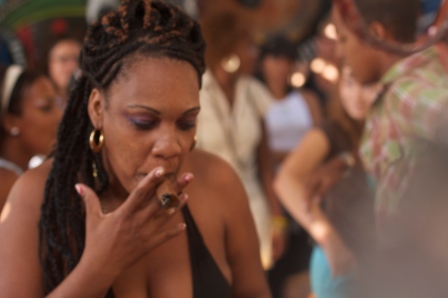
Lasse Werner, in the flesh.
Been meaning to get this post out for a minute… it’s about more than Scandinavian sauna culture…
After an early evening nap to postpone the jet lag, I zigzagged through Östermalm in the dwindling summer twilight to the Glenn Miller Café—a small, unsuspecting jazz club on a quiet backstreet. It was July 2011, my first week in Stockholm, Sweden, and the first week of a travel stint that would last nearly a year and a half. The evening featured a Septet headed by Kasper Agnas, a very young, talented guitarist and composer who I’d come to know quite well in the months to come.
— — —
— — —
The house was packed, hot as a sauna. I wedged into a corner. While waiting for the forthcoming set, I struck up a conversation with the fellow beside me, Mats Werner, an avid jazz enthusiast, a writer and, as I learned later, the brother of Lars (Lasse) Werner, a great Swedish pianist/composer extremely active in the 60s and 70s avant garde movement in Europe. A local hero to many, Lasse’s wildly whimsical writing shines on a 1967 session, Lars Werner och hans vönner (Lars Werner and his friends), which featured an intriguing cast of the Sweden’s avant vets, as well as one young American:
Alto Saxophone – Christer Boustedt
Bass – Sven Hessle
Drums – Jan Carlsson
Piano – Lars Werner
Tenor Saxophone –Göran Östling, Dave Liebman
Trumpet – Otto Donner
Turns out, Lars Werner och hans vönner would be Dave Liebman’s first record. (Oddly enough, Liebman also arrived in Stockholm in July. Funny I would meet Mats). Liebman actually recounted his episode with Lasse Werner in an installment of Oral History with Bill Kirchner for the Smithsonian Institute, as part of the 2011 NEA Masters of Jazz Project. Liebman tells it:
…
Got to Stockholm. Had a name from Cameron Brown, who had lived in Sweden. This was Lars Werner. Called him up. He says, “Come over to my house. This is the bus you take.” He said, “Do you know John Coltrane died today?” This is July 17th, 1967. I immediately – I started crying. He said, “Come over. We all know about this. We know what’s going on. You’ll be fine.” I went in, became part of the family. These guys took LSD every day, every day, and played eight hours, ten hours a day. I don’t know what the hell we played. Then you’d go out in the garden, and you’d have lunch. It was beautiful, because Sweden in summer, it’s great. Then you come in and play. I became part of the family. That’s that record. It came out of that experience. He wrote a tune for me called Ballad for Tenor Sax, my first real solo. It was my first recording, outside of high school, doing little 78s with Impromptu Quartet. My first record. Re-released – the guy just released it on CD. The daughter’s in touch with me. He died. He became something crazy. I don’t know what happened to him. He became a nut. I don’t know. Something happened to this guy. He was a Bud Powell kind of – he was a bebopper who went free, as a lot of those Scandinavian – that thing up there. It’s different, as I learned.
…
Mats Werner has worked hard to preserve the legacy of his brother Lasse, who passed in 1992. After meeting Mats at the Glenn Miller, I scribbled my email address on a napkin. A week later, Mats mailed me a copy of Och Hans Vönner—I’ve been a fan of Lasse ever since. Last February, Mats shared with me another recording of Lasse—a live, bootleg recording with the great trumpeter Don Ellis, forgotten for over 20 years while buried in Sweden’s national jazz archive. Someone apparently filed it incorrectly.

Poster for the film Lyckliga Skitar, featuring…
Lasse also appeared on the big screen. The sauna photo above is in fact a still from the 1970 indie film Lyckliga Skitar (in English, called Blushing Charlie), directed by Vilgot Sjöman, starring Bernt Lundqvist & Solveig Ternström. Lasse Werner: in the flesh—an event I hope Mats includes in his forthcoming biography about Lasse Werner (perhaps a testament to a relationship… not everyone with a brother would be so kind to write his biography).

Lasse Werner’s record Därför dricker jag—That’s why I drink!
And the dots keep connecting. Notice the record label of Lasse Werner’s That’s Why I Drink (on the record itself). While in Stockholm, I met the founder of Dragon Records, Lars Westin, a music journalist and editor of Orkester Journalen, a music encyclopedia, and a true authority on Swedish jazz. With Dragon Records, Westin produced several hundred jazz records—a few with Dave Liebman, countless by Swedish greats like Lasse Werner, an eight CD series of the great Swedish baritone saxophonist Lars Gullin, and a four CD set of Miles Davis touring Europe from 1960-1961 (alternating John Coltrane and Sonny Stitt). Dragon Records even gifted the world with the “Thong Song.” That’s right, Sisqo, a Dragon.
— — —
[youtube https://www.youtube.com/watch?v=T8vTwEcG3d0]


















